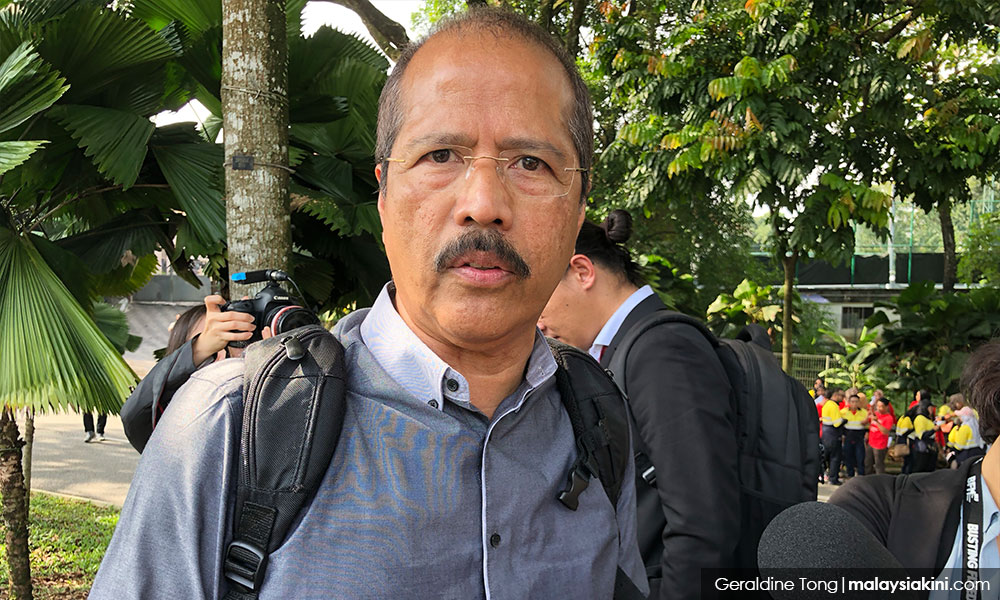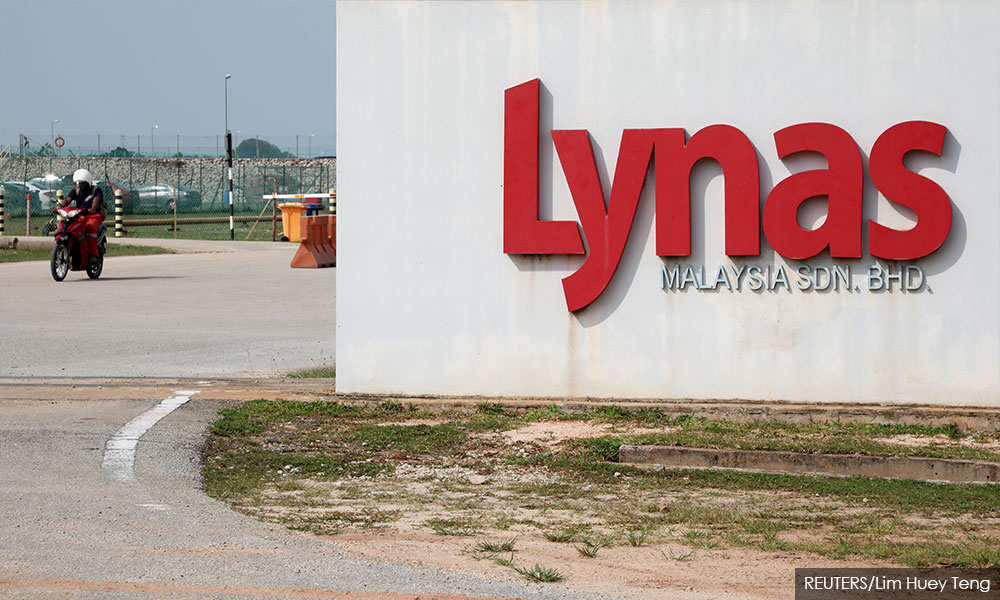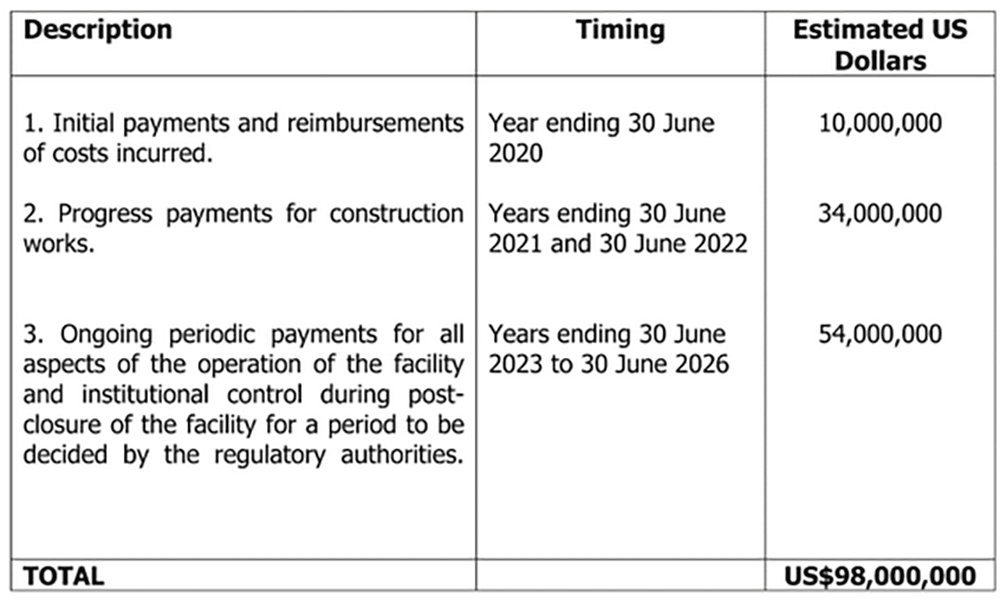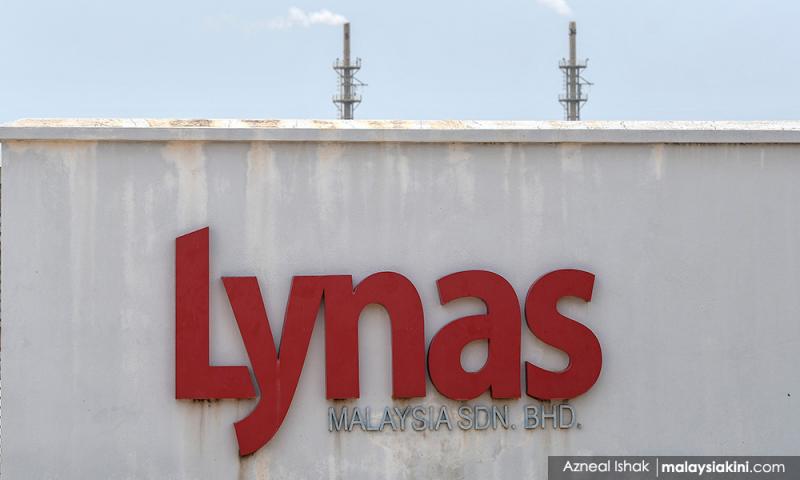More than seven years after they started operations in Malaysia, rare-earths producer Lynas Corporation might finally be within grasp of a state-approved solution for its radioactive waste. In a Jan 30 statement, Lynas says it has identified a site with consent from the Pahang state government to build what it calls a "permanent disposal facility" (PDF).
This PDF is key to Lynas’ operations in Malaysia. The company’s current operating licence expires on March 2, 2020. To renew its license, Lynas must fulfil three conditions set by Malaysian authorities. One of the conditions requires Lynas to either remove all radioactive waste from the country or obtain state approval for a location to build a PDF to dispose of the waste. With this announcement, Lynas appears to have met all three conditions.
In response, the government has “on a general principle” extended Lynas’ operating license for three years, according to an anonymous source cited by Malaysiakini on Feb12. The government hasn’t made any official announcement yet as of press time.
Since 2011, Lynas has submitted several plans related to a PDF to the Atomic Energy Licensing Board (AELB), the federal government body that regulates radioactive materials in Malaysia. However, neither Lynas nor the AELB has described the PDF in detail or shown successful examples of PDFs in Malaysia or indeed elsewhere.
This lack of transparency, public education and media engagements have continued to sow fear, conspiracy theories and protest among the public. Opposition to Lynas has been ongoing since its foray into Malaysia in 2007; it continues to be a political hot potato.

In this article, we scrutinise the PDF. We report from published documents, interviews with researchers, and email replies from Ismail Bahari (photo), Lynas Malaysia’s general manager of radiation safety, regulations and compliance. The AELB, a key player in this context, has not agreed to our multiple requests for interviews since August 2019.
1. What is a permanent disposal facility (PDF)?
It is a facility to contain disposed waste for the long term.
In its Radioactive Waste Management Plan (December 2011), Lynas wrote that it would first store radioactive residue in temporary on-site storage facilities and transport it later to a “permanent disposal facility”.
In this plan, submitted to the AELB as part of its application for a temporary operating license, Lynas presented “safety principles, siting criteria for the PDF and the safety assessment of the disposal” in a document prepared by Environ Consulting Services Sdn Bhd. Macaranga has no access to this document.
2. What does a PDF do, and what laws regulate it?
The International Atomic Energy Agency (IAEA) establishes safety standards for the handling and disposal of radioactive materials. Member states of the IAEA, including Malaysia, can refer to these safety standards and apply them voluntarily.
With regards to radioactive waste disposal facilities, the IAEA states that ‘disposal’ refers to the placing of radioactive waste into a facility or location without any intention to retrieve the waste in the future.
The agency lists the specific aims of a radioactive waste disposal facility as follows:
(a) To contain the waste;
(b) To isolate the waste from the accessible biosphere and to reduce substantially the likelihood of, and all possible consequences of, inadvertent human intrusion into the waste;
(c) To inhibit, reduce and delay the migration of radionuclides at any time from the waste to the accessible biosphere;
(d) To ensure that the amounts of radionuclides reaching the accessible biosphere due to any migration from the disposal facility are such that possible radiological consequences are acceptably low at all times.
What is “accessible biosphere”? To the IAEA, it is “taken generally to include those elements of the environment, including groundwater, surface water and marine resources, that are used by people or accessible to people”.
In Malaysia, the Atomic Energy Licensing Act 1984 (Act 304) provides control over matters of atomic energy and is enforced by the local regulator, the AELB. Any operator that wishes to dispose of radioactive waste must apply for the appropriate license from the AELB and adhere to rules stated in Part 3 Section 5 of the Atomic Energy Licensing (Radioactive Waste Management) Regulations 2011.

3. How long would a PDF last?
The IAEA says that “disposal facilities are not expected to provide complete containment and isolation of waste over all time; this is neither practicable nor necessitated by the hazard associated with waste, which declines with time”.
Lynas had planned for a PDF to run for 300 years, but Ismail Bahari confirmed that “the regulatory authorities will determine the period”.
So, "permanent" doesn’t mean "forever".
4. What will Lynas dispose of and store in the PDF?
Lynas will use the PDF to dispose of its radioactive waste, which are solids that Lynas calls ‘“water leach purification (WLP) residue’”. These are the leftovers after rare earth compounds are extracted from rare earth ores. WLP residues are radioactive because they retain radioactive elements like thorium which occur naturally in the crude ores that Lynas imports from Australia.
Aside from WLP residue, the PDF may also store “materials from the decommissioning of the Lynas plant at the end of its operating life,” Lynas’ Ismail Bahari told Macaranga.
5. Is disposal in a PDF the only or best way to deal with radioactive waste?
No, international standards recommend alternatives to manage radioactive waste before disposal. The IAEA recommends these steps, taken in the following order: reduce, reuse, recycle, and finally, dispose.
Since Lynas started operations in 2012, a PDF has never been the company’s first choice. Instead, it preferred to reuse or recycle its WLP. Up till 2018, Lynas had been developing ways to recycle WLP residue. The company sponsored local researchers to test the potential for WLP residue in agricultural use.
But these studies failed to convince an executive committee appointed in 2018 by the new Pakatan Harapan government to evaluate Lynas operations. The committee instead recommended Lynas immediately build a disposal facility for WLP residue.
In terms of WLP residue disposal, Macaranga sought the opinion of Suhairul Hashim, a member of the Nuclear and Radiation Physics Research Group at Technology University Malaysia. Suhairul is independent of Lynas and was appointed by the AELB in 2014 to conduct a pre-license audit of Lynas.
Suhairul also prefers the "cradle-to-cradle" rather than the "cradle-to-grave" approach.
“In Lynas’ case, if all measures failed, then the final solution to dispose (of) radioactive waste is (a) PDF.
“Unfortunately, the public is made to believe that (a) PDF is the ONLY and best solution,” Suhairul told Macaranga in an email.

6. Will radiation from Lynas’ WLP residue harm us?
The radiation from WLP residue isn’t expected to pose a health threat, some experts say. Lynas reported that workers handling WLP residue are exposed to less than 0.62 millisieverts (mSv) radiation a year, well below the 20-mSv threshold advised by the IAEA.
Dr Ng Kwan Hoong, a medical physicist at the University of Malaya and who is independent of Lynas, had said in a science article that such low doses of radiation produce “negligible” health effects.
AELB reports that radiation levels in and around the Lynas facility were always within the safety threshold advised by the IAEA. The board stopped posting measurements after 2018.
7. Where might the PDF be built?
Lynas says it has located a suitable site in the vicinity of Bukit Ketam, Pahang. In its statement, Lynas describes the site as “remote”; Ismail Bahari said the site “meets the requirements of the Atomic Energy Licencing Board and the recommendations of the IAEA”.
On Google Maps, Bukit Ketam appears to be a green sea of oil palm estates.
8. What’s the status of the PDF now?
The Lynas statement says that the chosen site has received the consent of the Pahang state government.
But whether a PDF can be built there depends on the final approval of the AELB, as reported by the New Straits Time on Feb 2. An official announcement from the government is pending.
9. What might the Lynas PDF look like?
Macaranga requested Lynas to either share its PDF construction plan or provide enough details to help our readers visualize the proposed PDF.
Ismail Bahari replied that they “will provide further details once plans are approved by the AELB”. He also pointed us to the photo of a temporary storage site for low-level radioactive waste in Ontario, Canada. The photo shows a storage mound covered in greenery.
Ismail further states that according to the IAEA classification of radioactive waste, the WLP residue qualifies as ‘very low-level waste’. Macaranga checked this against IAEA safety standards which say that such waste “does not need a high level of containment and isolation and is suitable for disposal in near-surface landfill type facilities with limited regulatory control”.
“Near-surface” generally refers to any depth from the surface to 30 meters deep, and designs could range from “simple to more complex engineered means”.
10. How safe is the PDF?
This is likely one of the public’s top concerns. But without details of the PDF construction plan, Macaranga cannot ask independent experts to evaluate the PDF.
11. Who is building it?
We don’t know yet, but Lynas in its Jan 30 statement announced that it has contracted Gading Senggara Sdn Bhd to manage the PDF project from design to construction and subsequent maintenance, according to its Jan 30 statement.
We wanted to get an idea of the technical challenges to design and build a PDF. We emailed consultants from Geosyntec, the multinational engineering and consulting firm who between 1992-2017 handled the decommissioning, decontamination and radioactive waste disposal of the Asian Rare Earth Sdn Bhd facilities at Bukit Kledang, Ipoh. Geosyntec didn’t reply.
To the suggestion that foreign expertise is required to build the PDF, Ismail Bahari disagrees. “Lynas Malaysia’s onsite residue storage facilities are already built to international standards, with a temporary rather than permanent capping,” he told Macaranga.
12. Who is Gading Senggara Sdn Bhd?
Macaranga asked Lynas why they contracted Gading Senggara and how many other companies were considered. Ismail Bahari replied: “Gading Senggara is a government-appointed concessionaire with the licence for industrial waste disposal for the east coast region of Peninsular Malaysia. It is also a member of the Gading Group which is a significant Malaysian business.”
As of Feb 12m 2020, the Gading Group website lists its business divisions as aerospace, oil and gas, defence, maritime, property development and wood shaving. Macaranga couldn’t find any mention of "Gading Senggara" or "environmental consultancy" on the website.
Macaranga tried to reach Gading Senggara through the Gading Group’s contact phone number and email. We received no reply.
According to information recorded (as of Jan 30, 2020) with the Companies Commission of Malaysia, Gading Senggara Sdn Bhd was incorporated in 2012. Its nature of business is listed as "construction/contractor" and "developers".
The company’s latest available financial information was for the financial year ended June 2015, during which it made no sales and incurred a loss after tax of almost RM1,700.
13. How much will the PDF cost to build and maintain?
In its Jan 30 statement, Lynas estimates it will pay Gading Senggara a total of US$98 million (almost RM400 million). This figure is almost four times the US$25 million (about RM77 million then) estimated by Lynas in December 2011 for the same purpose.
The estimated payment as tabled in Lynas’ Jan 30 statement:

As required by the AELB, since 2013, Lynas has in tranches deposited a total of US$50 million in cash and government bonds with the agency. This fund was designated for paying the “decommissioning, decontamination, and establishment of a PDF”. Lynas says it will tap into this deposit for partial payment of the PDF.
14. What’s next?
It appears that whether the PDF will be built at Bukit Ketam, or even if Lynas will get its operating license renewed after March 2, 2020, depends on the local regulator.
In a quarterly briefing for investors delivered Jan 24, 2020, Lynas managing director Amanda Lacaze revealed that “the AELB has already completed its pre-license audit, and once again, rated Lynas as very satisfactory, which is indeed the highest level rating that can be achieved”.
Ismail Bahari confirmed that “a Construction Plan specifically for the long term storage of the WLP residue has been submitted to the AELB for their approval,” and that “construction will commence once all approval has been received”.
The bottom line is that Malaysians depend only on the AELB to regulate operators of radioactive materials and safeguard public interest. But for the public, dependence doesn’t easily translate into confidence. The trouble is that the public does not appear to understand or even trust the AELB.
For this and previous articles, the writer has interviewed a broad range of stakeholders, from Lynas protestors, radiation safety officers, and medical professionals for their views on the issue. They had a common suggestion - the AELB should engage the public or media in constructive conversations, and disclose timely data on radiation levels in and around the Lynas facility.
It might be best for Lynas and all parties to implement a recommendation by the executive committee review in December 2018 - establish a monitoring committee comprising representatives from the relevant ministries, departments, experts, NGOs, local communities, Lynas and other affected parties.
This article was first published by Macaranga.org, a Malaysian environmental news website.





